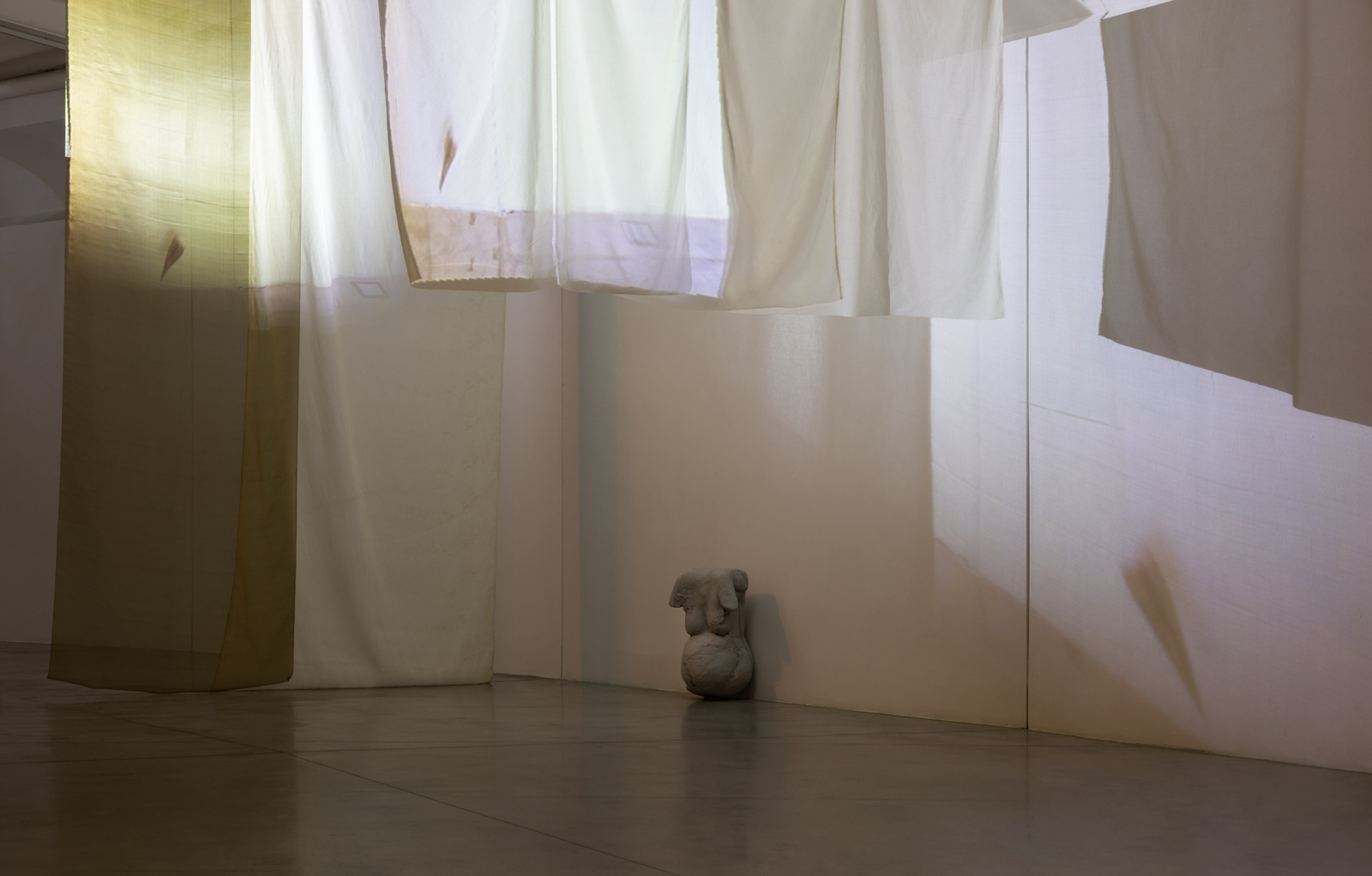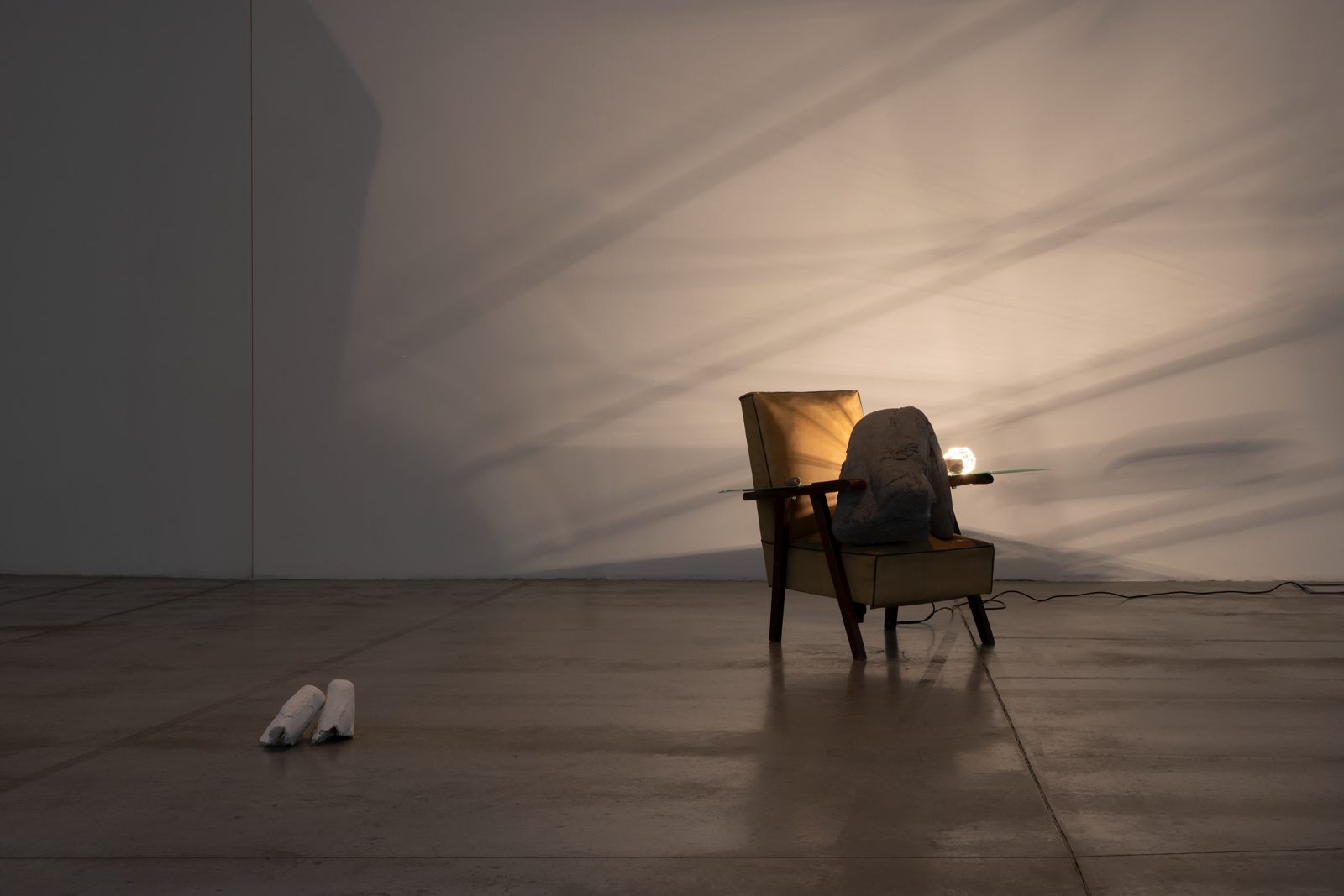Shows
Yu Ji’s “Hide Me in Your Belly”

Yu Ji
Hide Me in Your Belly
Centro Pecci
Prato, Italy
Jun 28–Sep 8
Walking into “Hide Me in Your Belly,” Chinese artist Yu Ji’s inaugural solo exhibition in Italy, felt like entering a zone of intimacy. Floating pieces of fabric used for her video projections and sculptural fragments positioned along the curve of the Ala Piccola Nio (the exhibition hall within the museum) translated into an unassuming yet potent landscape in which elements were both transitional and transient, constantly shifting between the corporeal and the ethereal. Their individual and collective natures existed here as objects ex nihilo, while at the same time bearing the traces of their previous manifestations.
Far from resisting the architecture, Yu activated it from unexpected angles by using nontotemic interventions that organically blended with each other and with the space, rather than functioning as separate, hierarchic statements. The specificity of the space’s womb-like structure also resonated with the exhibition title. The “belly,” of course, often serves as a site of protection, a shelter, a safe haven where one can feel comprehended, as the Latin word comprehendere would suggest: to be mentally understood, but, most of all, to be physically contained within someone else, as in a womb. “Hide Me in Your Belly,” as a title, also suggests notions of being devoured or swallowed, which appears in the plot of numerous fairy tales, anticipating the existence of a semantic double layer hidden in the methodology of Yu Ji, and in everything that was on view.
The first work that visitors encountered was the series of Yu’s most recent videos, Stillness Practice I, II and III (all 2024)—a row of almost transparent, fluttering fabric featuring scenes of Yu’s son playing. The artist lived in Prato with her son for two months, and much of what appears in these films attests to their journey moving to the northeastern Tuscan city. The works also recalled the use of the exhibition hall as a study, playground, and research space infused with evocations of motherhood and pregnancy.

Installation view of YU JI’s "Hide Me in Your Belly," Centro Pecci, Prato, Italy. Photo by Andrea Rossetti. Courtesy the artist and Sadie Coles HQ, London.

YU JI, Flesh in Stone – Ghost No. 9, 2021, armchair, cement, mirror, lamp, steel bar, stone, 70 × 100 × 90 cm, at "Hide Me in Your Belly," Centro Pecci, Prato, Italy. Courtesy Galerie Martin Janda, Vienna.
This ambivalence was advanced by Yu’s sculptures, visual crystallizations of a cyclical process of renewal and re-appropriation. A number of works from her series Flesh in Stone (2012–24) are reconfigurations of the same sculptures shown during “Miss Shell, Delta, and Two Noughts” (2023), Yu’s first exhibition in Germany. This approach conveys a sense of precariousness: everything is volatile, provisional, and liminal. Fragility and instability, as both transformative and destructive forces, lie at the heart of the individual, and form the essence of place and time. At the center of the nave was her most complete installation, Flesh in Stone - Ghost No. 9 (2021), a combination of a vintage armchair and cement figures—one larger than the other, both on top of a table—as well as a steel bar, an old mirror, and a lamp. It is a work that reduces the anthropomorphic cement figure to an essential, almost abstract shape devoid of monumentality or even personality. Portrayed in such an unnatural way, it recalls the metamorphic possibilities of the body when positioned between becoming and being, potential and realization.
Scattered on the floor were plaster casts of her son’s body, as if to mark his presence. Or perhaps they simply represented the domestic, as well as existence and growth. Interestingly, none of the objects in the exhibition appeared as an integrated whole. Instead, the space was gently activated by fragments. The idea of a corridor or a passageway contributed to making this a transitory experience, one in which the works became metonymies of the landscape of contemporary life; of our condition as individuals striving to go back to a potential wholeness, but always struggling to keep ourselves balanced; forever condemned to be hybrid, incomplete, and provisional things.
Manuela Lietti is an independent art critic and curator specializing in contemporary Asian art. She works between Beijing, Milan, and Venice.







